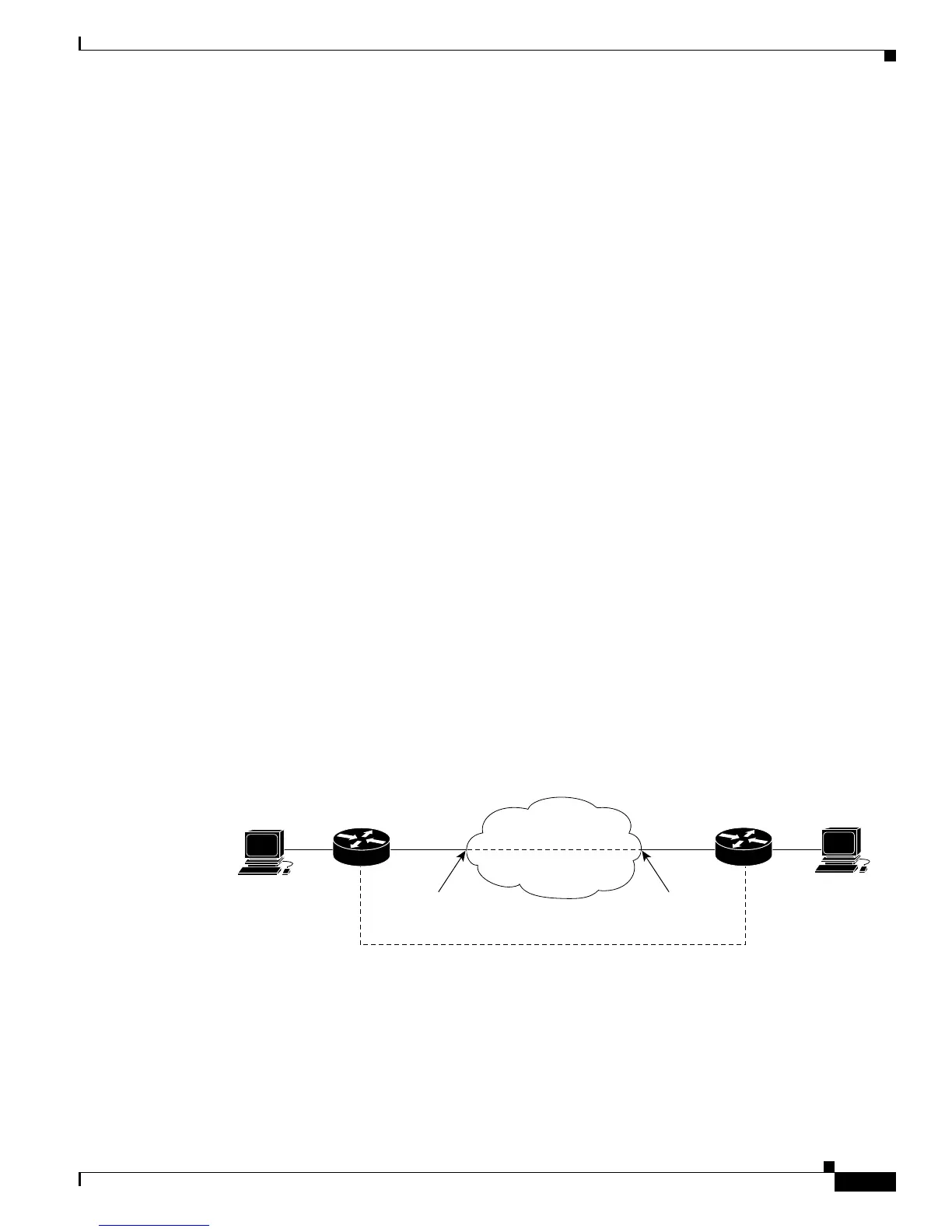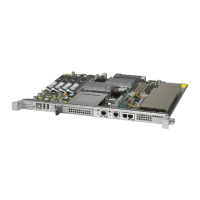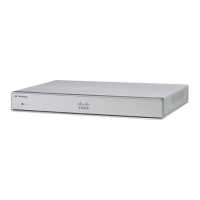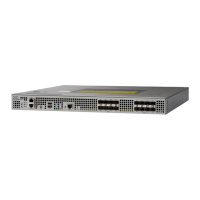16-37
Cisco 10000 Series Router Quality of Service Configuration Guide
OL-7433-09
Chapter 16 Fragmenting and Interleaving Real-Time and Nonreal-Time Packets
FRF.12 Fragmentation
FRF.12 Fragmentation
FRF.12 Fragmentation uses Frame Relay Forum FRF.12-based fragmentation on Frame Relay
permanent virtual circuits (PVCs) to allow long, nonreal-time data packets to be broken into smaller
frames and shorter real-time packets to be interleaved between the fragments. In this way, real-time and
nonreal-time packets can be carried together on low-speed links without causing excessive delay to the
real-time traffic. The real-time packets remain intact and are less likely to experience long queuing
delays.
FRF.12 fragmentation is defined by the FRF.12 Implementation Agreement. The router implements the
end-to-end application of the FRF.12 standard. This application specifies fragmentation between two
Frame Relay data terminal equipment (DTE) devices that are interconnected by one or more Frame
Relay networks.
The following describes how FRF.12 mechanisms fragment and reassemble packets:
• Nonreal-Time Transmit—The transmitting LFI-enabled data terminal equipment (DTE) fragments
large nonreal-time packets into smaller frames and encapsulates the frames as FRF.12 end-to-end
packets.
• Real-Time Transmit—The DTE encapsulates real-time packets as Frame Relay packets and
interleaves the real-time packets between the nonreal-time fragments.
• Nonreal-Time Receive—The receiving LFI-enabled DTE reassembles the nonreal-time fragments
and processes the reassembled packets as Frame Relay packets.
• Real-Time Receive—Because real-time packets are whole packets and not fragments, reassembly is
not required. Instead, the receiving DTE simply processes and forwards the Frame Relay packets.
FRF.12 fragmentation transmits in order all fragments associated with a nonreal-time packet before
transmitting fragments from another nonreal-time packet associated with the same PVC. When
fragments arrive out of order, the receiving DTE detects and discards any packets that are missing
fragments.
Figure 16-6 shows an example configuration of end-to-end fragmentation. When FRF.12 fragmentation
is used between two peer DTEs, the fragmentation procedure is transparent to the Frame Relay networks
between the transmitting and receiving DTEs.
Figure 16-6 End-to-End Fragmentation and Reassembly
You can configure FRF.12 Fragmentation at the PVC or interface level. For more information, see the
“PVC-Based FRF.12 Fragmentation” section on page 16-40 and the “Interface-Based FRF.12
Fragmentation” section on page 16-40.
132277
Frame Relay
Network
Frame Relay
DTE
DLCI 100
DCE
Interface
Frame Relay PVC
DCE
Interface
DLCI 100
Frame Relay
DCE
Frame Relay
DTE
Fragmentation Peers
Cisco 10008
Router

